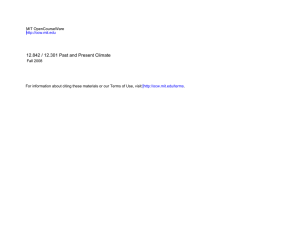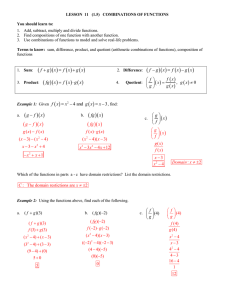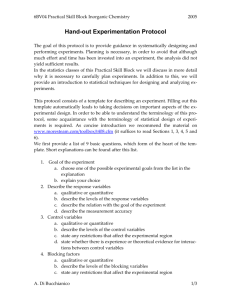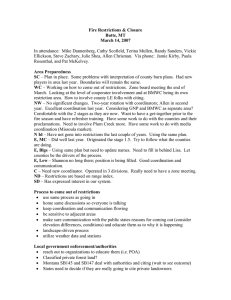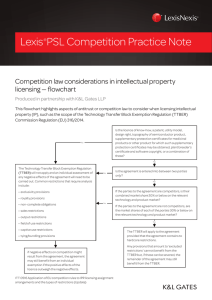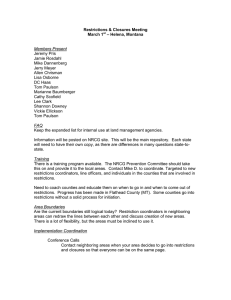Handout: Some notes on functions and notation
advertisement
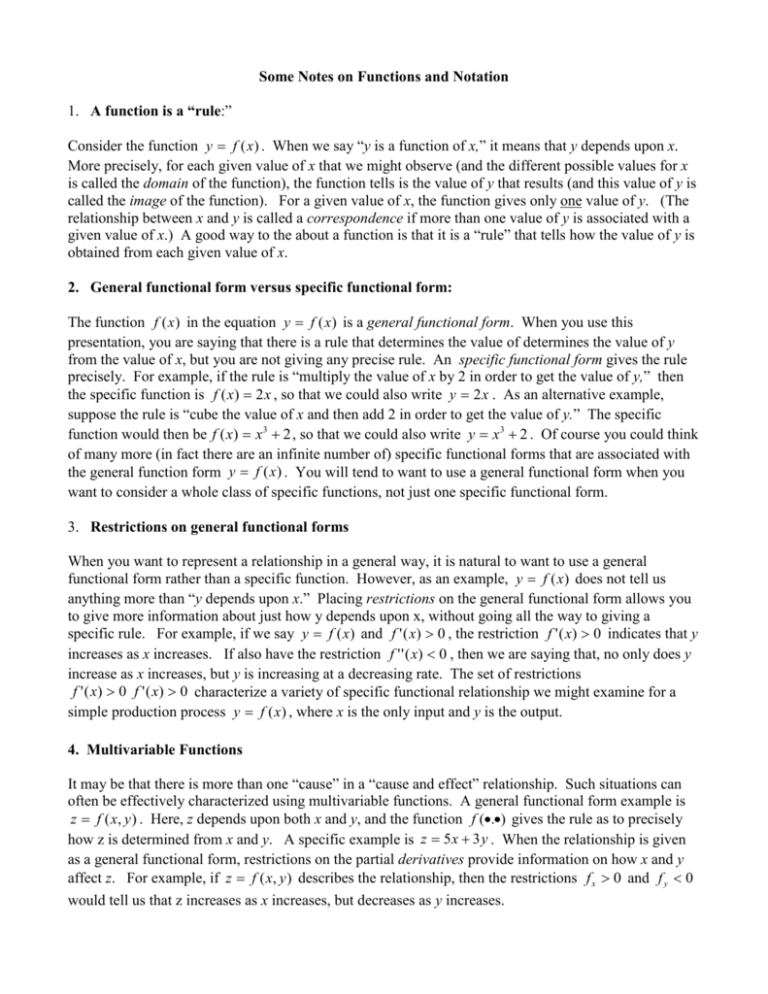
Some Notes on Functions and Notation 1. A function is a “rule:” Consider the function y f (x) . When we say “y is a function of x,” it means that y depends upon x. More precisely, for each given value of x that we might observe (and the different possible values for x is called the domain of the function), the function tells is the value of y that results (and this value of y is called the image of the function). For a given value of x, the function gives only one value of y. (The relationship between x and y is called a correspondence if more than one value of y is associated with a given value of x.) A good way to the about a function is that it is a “rule” that tells how the value of y is obtained from each given value of x. 2. General functional form versus specific functional form: The function f (x) in the equation y f (x) is a general functional form. When you use this presentation, you are saying that there is a rule that determines the value of determines the value of y from the value of x, but you are not giving any precise rule. An specific functional form gives the rule precisely. For example, if the rule is “multiply the value of x by 2 in order to get the value of y,” then the specific function is f ( x) 2 x , so that we could also write y 2 x . As an alternative example, suppose the rule is “cube the value of x and then add 2 in order to get the value of y.” The specific function would then be f ( x) x3 2 , so that we could also write y x3 2 . Of course you could think of many more (in fact there are an infinite number of) specific functional forms that are associated with the general function form y f (x) . You will tend to want to use a general functional form when you want to consider a whole class of specific functions, not just one specific functional form. 3. Restrictions on general functional forms When you want to represent a relationship in a general way, it is natural to want to use a general functional form rather than a specific function. However, as an example, y f (x) does not tell us anything more than “y depends upon x.” Placing restrictions on the general functional form allows you to give more information about just how y depends upon x, without going all the way to giving a specific rule. For example, if we say y f (x) and f ' ( x) 0 , the restriction f ' ( x) 0 indicates that y increases as x increases. If also have the restriction f ' ' ( x) 0 , then we are saying that, no only does y increase as x increases, but y is increasing at a decreasing rate. The set of restrictions f ' ( x) 0 f ' ( x) 0 characterize a variety of specific functional relationship we might examine for a simple production process y f (x) , where x is the only input and y is the output. 4. Multivariable Functions It may be that there is more than one “cause” in a “cause and effect” relationship. Such situations can often be effectively characterized using multivariable functions. A general functional form example is z f ( x, y ) . Here, z depends upon both x and y, and the function f (.) gives the rule as to precisely how z is determined from x and y. A specific example is z 5 x 3 y . When the relationship is given as a general functional form, restrictions on the partial derivatives provide information on how x and y affect z. For example, if z f ( x, y ) describes the relationship, then the restrictions f x 0 and f y 0 would tell us that z increases as x increases, but decreases as y increases.


